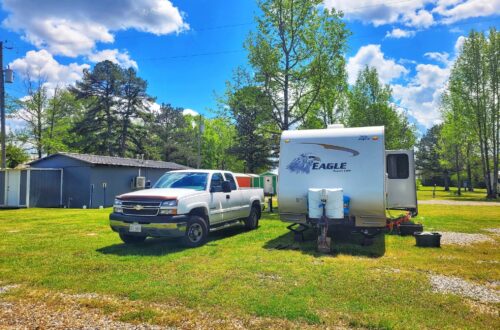Our first drive as full-timer RVers would have been at least 6 ½ hours (probably more with towing) so we decided to split the drive into two days. We found a Harvest Hosts spot at almost the exact halfway point in Atlanta, Illinois on historic Rte. 66. (Read more about our Harvest Hosts experience here). We had some time after the drive to explore the town. It was Easter Sunday, so nothing was really open, but there was actually quite a lot to see. All throughout downtown were memorials, monuments, plaques, and info signs about Atlanta and Route 66.
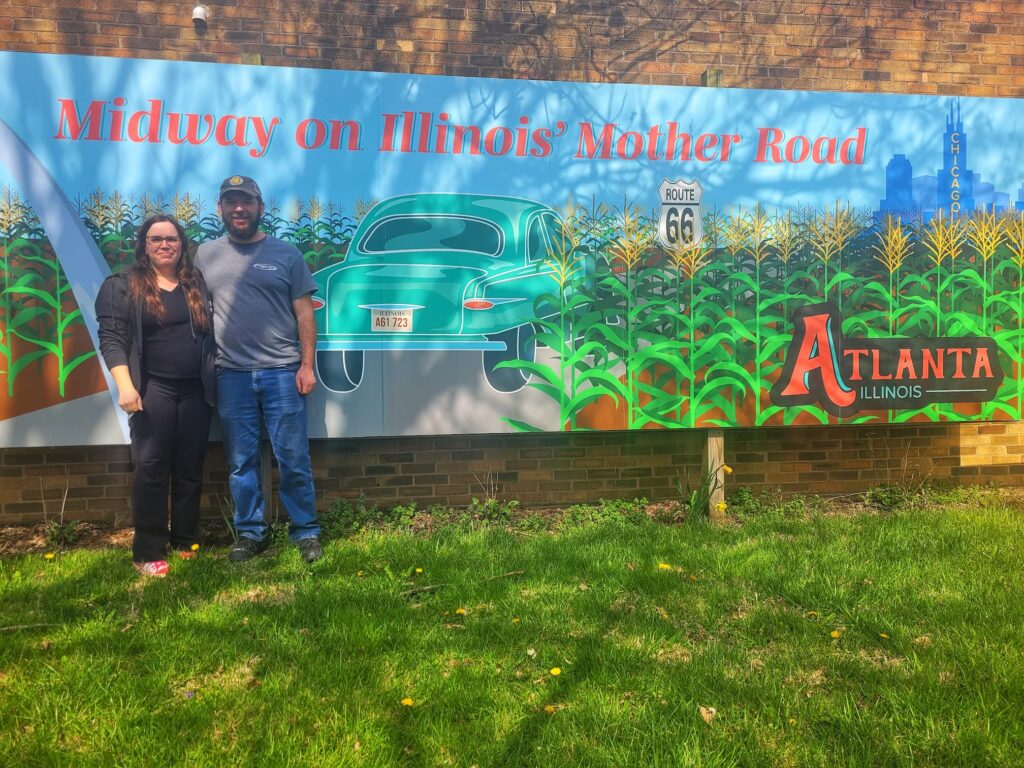
Atlanta’s Octagonal Library
Atlanta’s public library was founded in 1873 with money donated by citizens of the town. It moved around town for a while until construction of the current building was finished in 1909. The building is unique since it’s completely octagonal. In fact, every side but the front is symmetrical! Octagon buildings had a bout of popularity in the mid-1800s. Proponents liked them because they were compact but had large interiors, and because they provided better acoustics than square rooms. The library was designed by Paul Moratz and built by Joseph Reichel- the same duo built the El Paso, IL Carnegie library. In 1979 the building was added to the National Register of Historic Places. The other cool thing about this building is that it has been used continuously as the library since it opened, and is still used today. The library is even a Harvest Hosts site, but wasn’t available as an option to us since we stayed in Atlanta on a Sunday night.
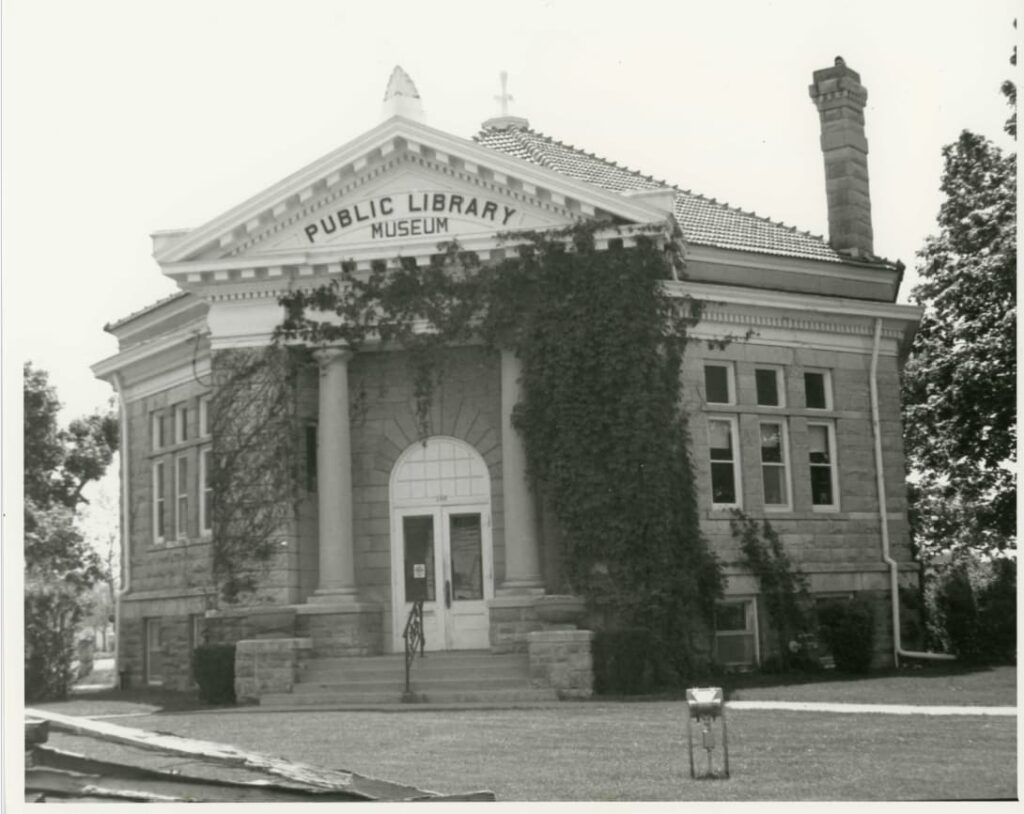
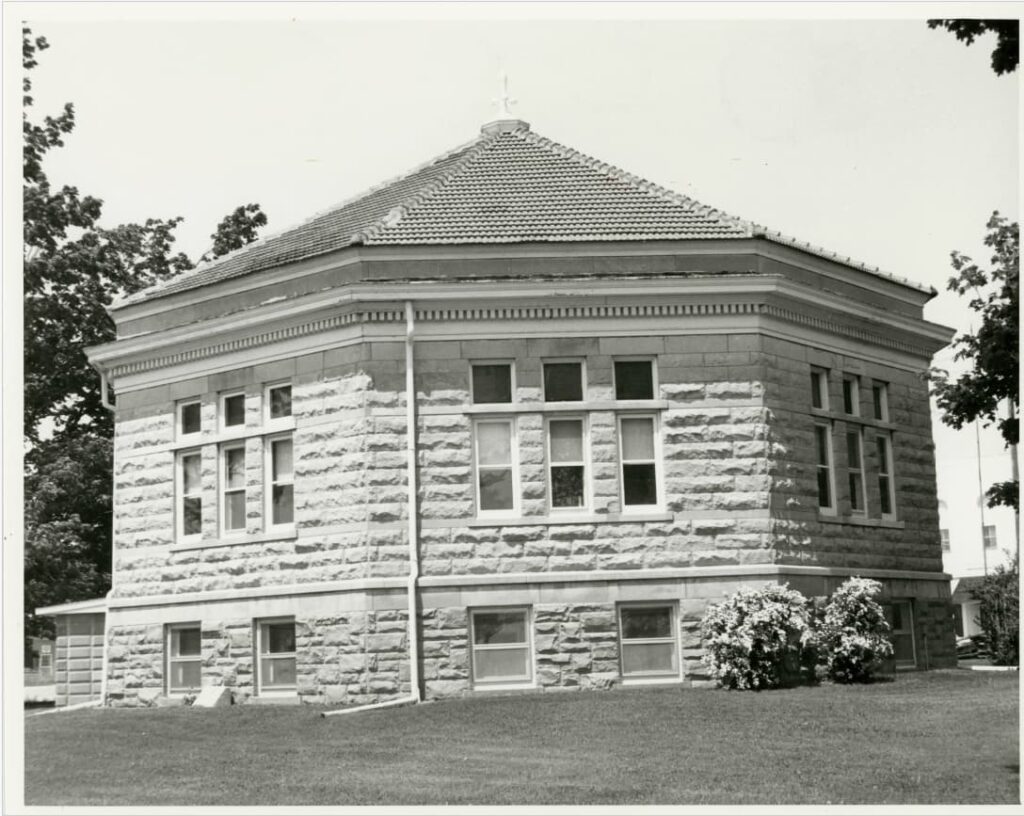
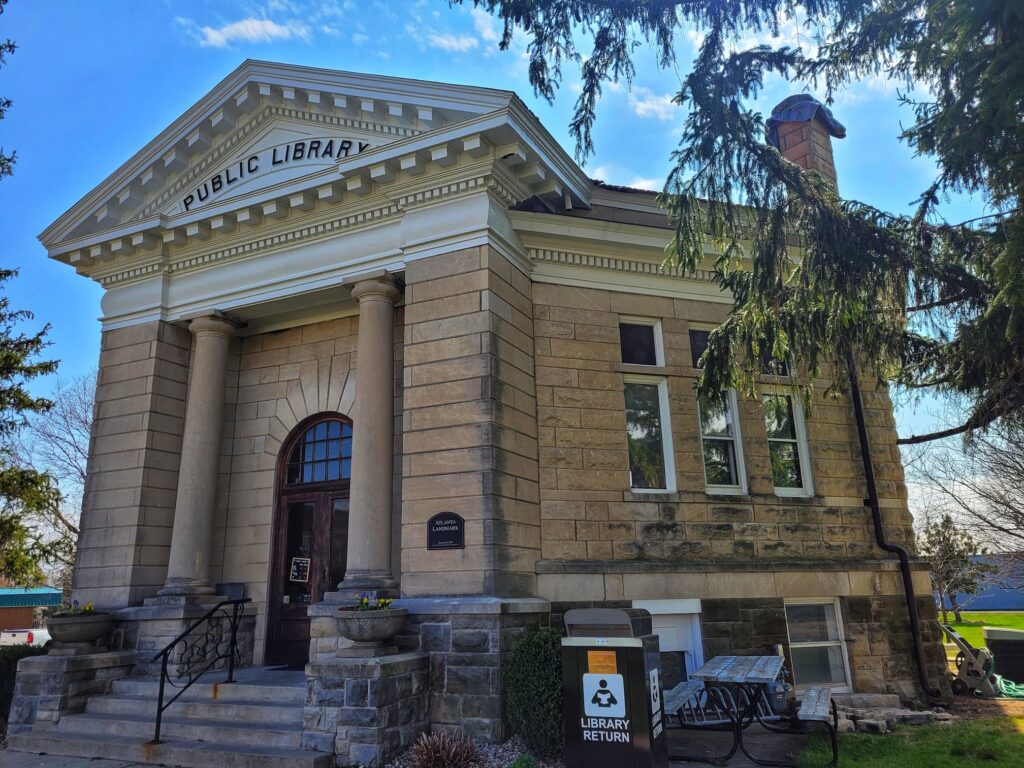
They Saved the Clock Tower
The 40 foot clock tower on the grounds of the Sparta library used to be part of the high school. It was built in 1909 and moved in the early 1980s when the school was demolished. Part of moving and restoring it really did include a public campaign and fundraiser to save the clock tower. It boasts 5 clock faces and gets wound by hand every 8 days.
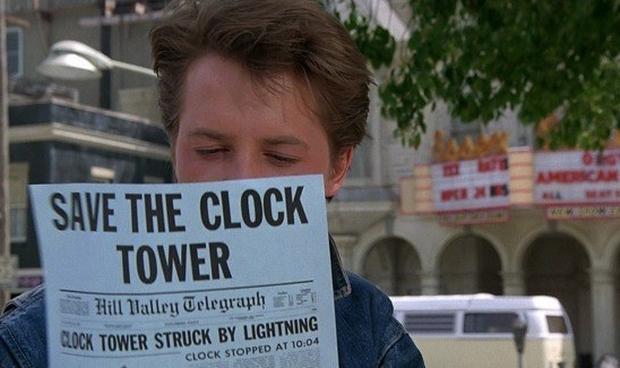
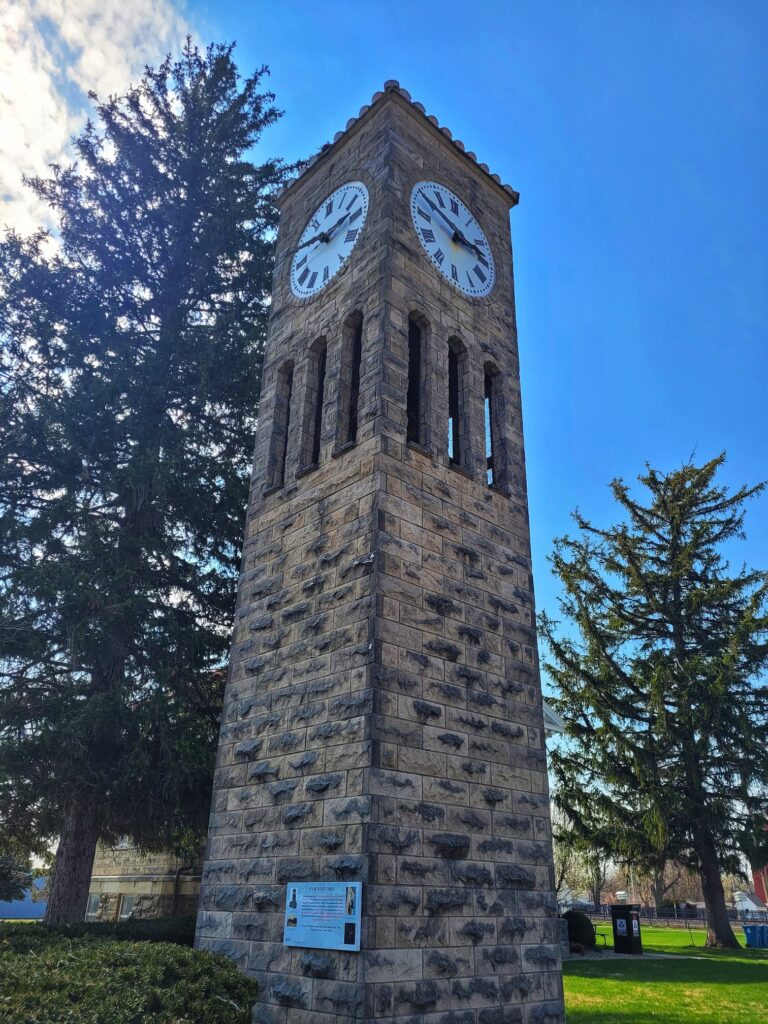
Find Loads of History in Route 66 Park
On a street corner across from the library is a little pocket park called Route 66 Park. It’s basically a collection of monuments, markers, and informational signs about the town of Atlanta, IL. Basically candy for a plaque-addict like me. We saw a cornerstone from the 1909 high school, a stone from the 1870 public school, an informational sign about the history of African Americans in Atlanta, a memorial stone from the Knights of Pythias, a field marker stone from an old farm, an early bubbler water fountain, a mural of Route 66, and the original ticket booth from the former Atlanta Fair. This is such a great way for towns to share and preserve their history.
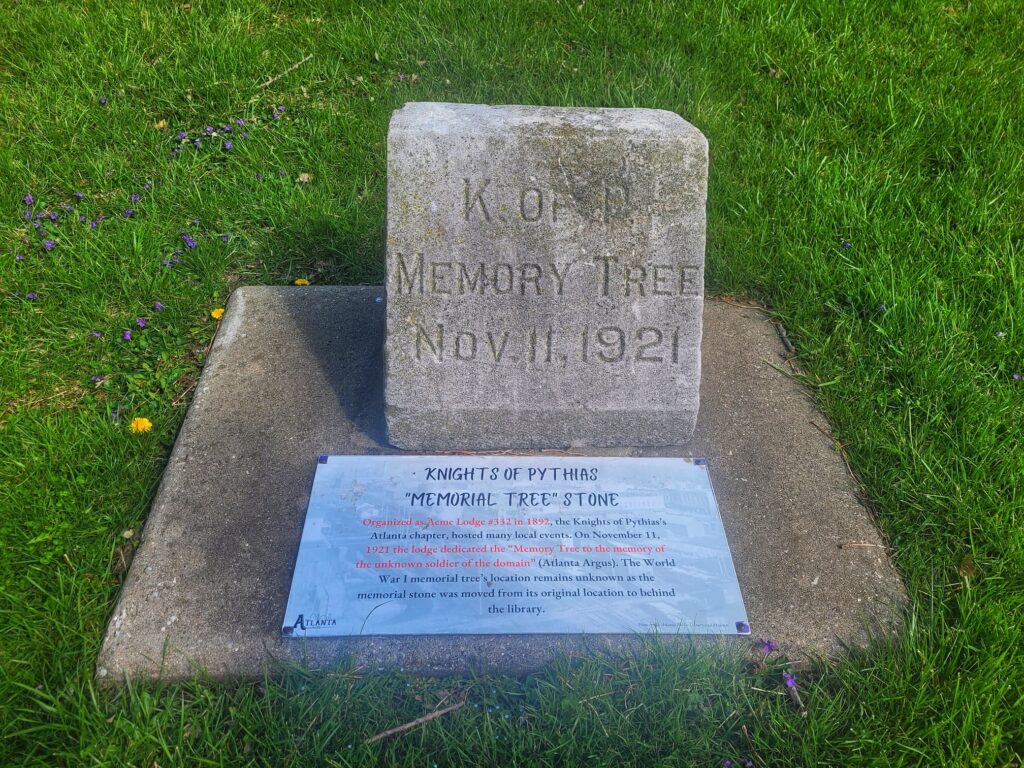
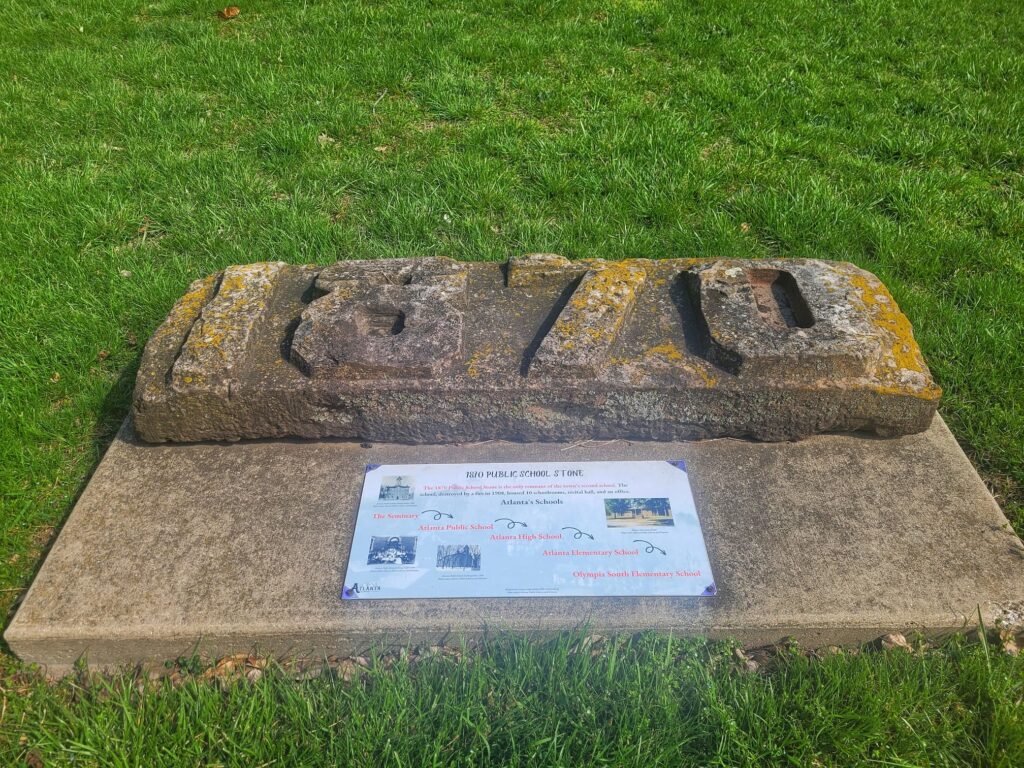
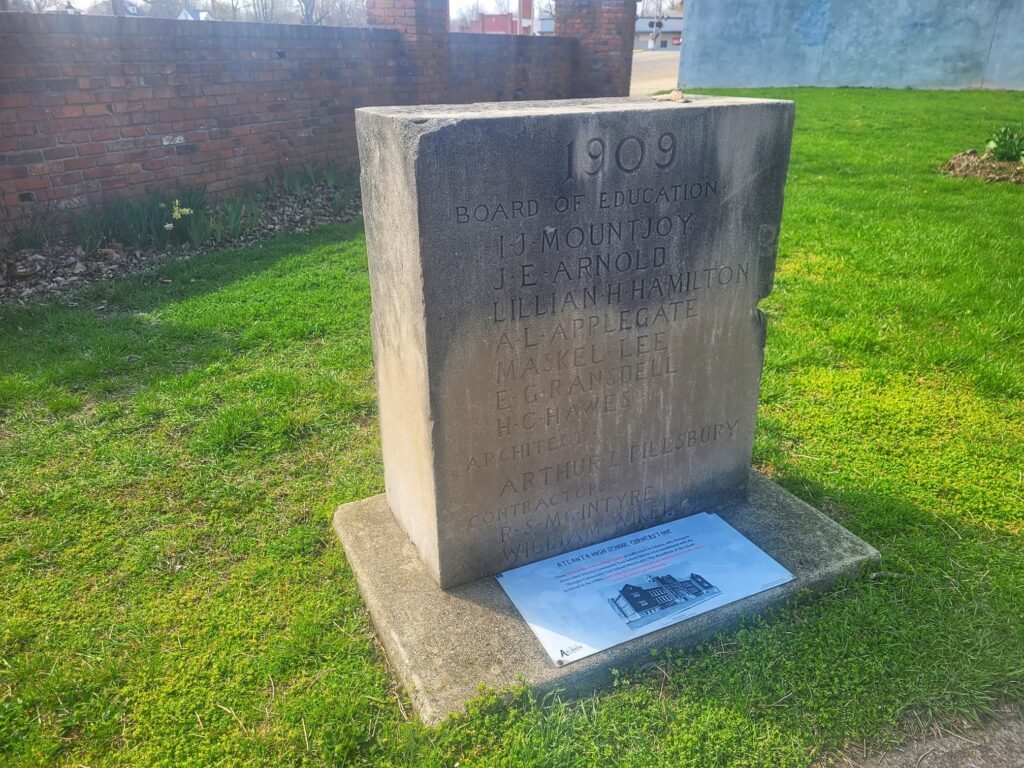
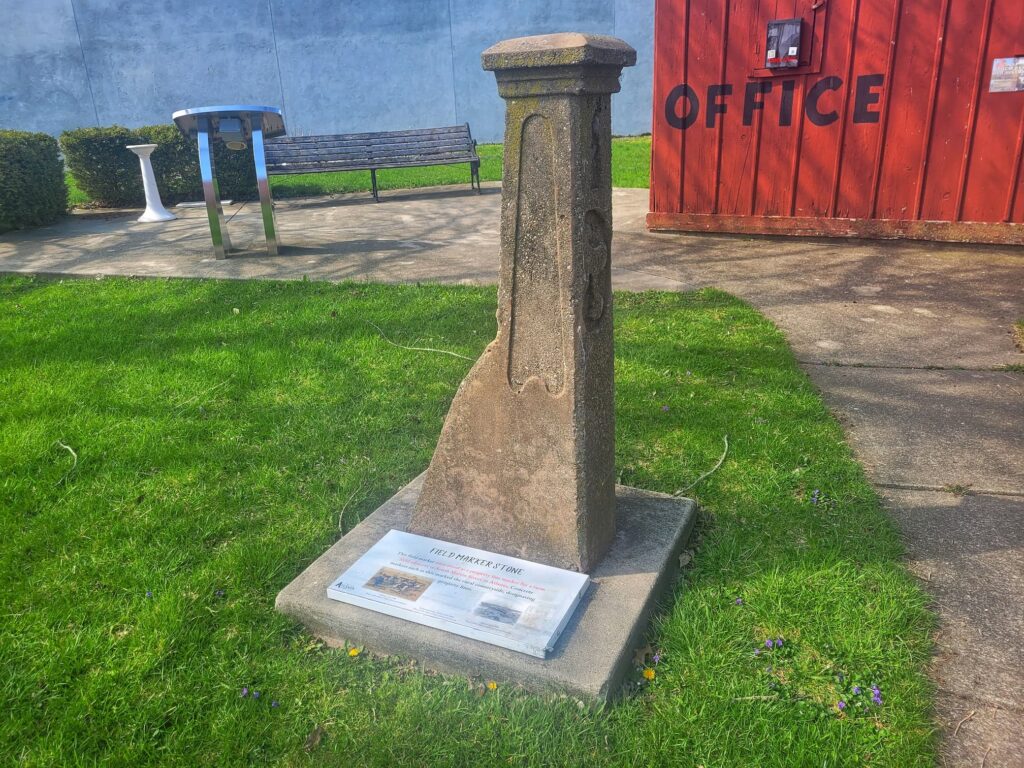
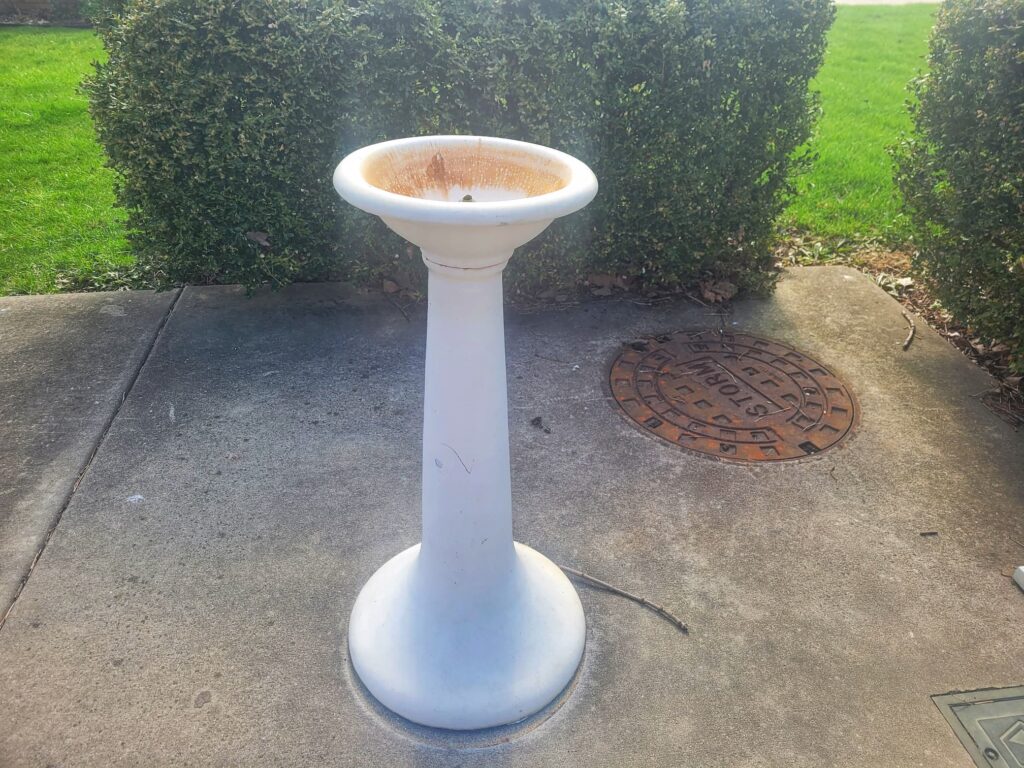
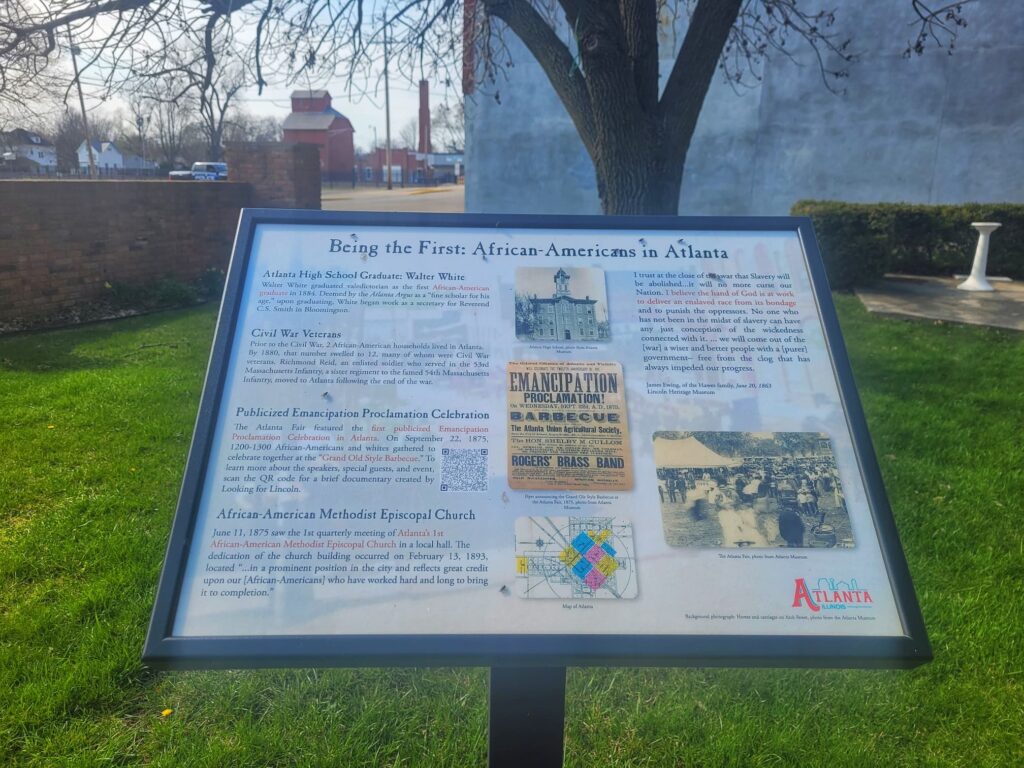
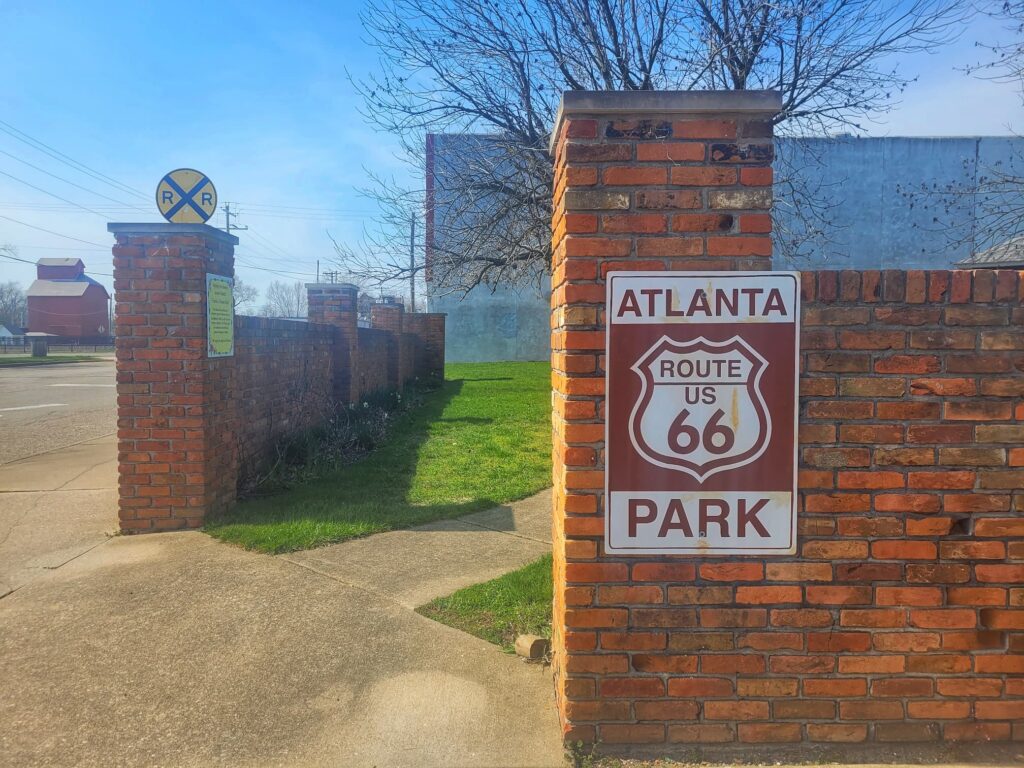
Learn about Atlanta, IL’s Agricultural History
The J.H. Hawes Grain Elevator Museum was closed the day we visited Atlanta, but the grounds are open daily to walk around, so we were still able to check everything out from the outside and read a lot of the informational signs. This all wood grain elevator was built in 1903 to store grain from local farmers before being shipped by railroad. The J.H. Hawes Elevator is what’s called a studded grain elevator because vertical wood studs formed the grain bins inside.
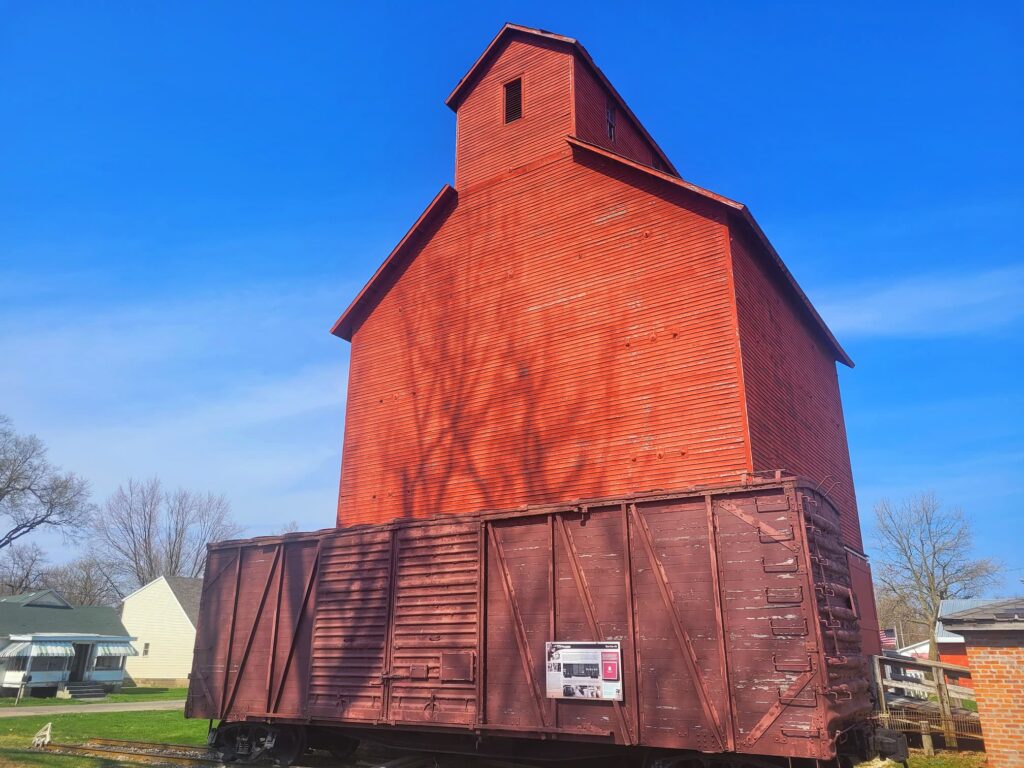
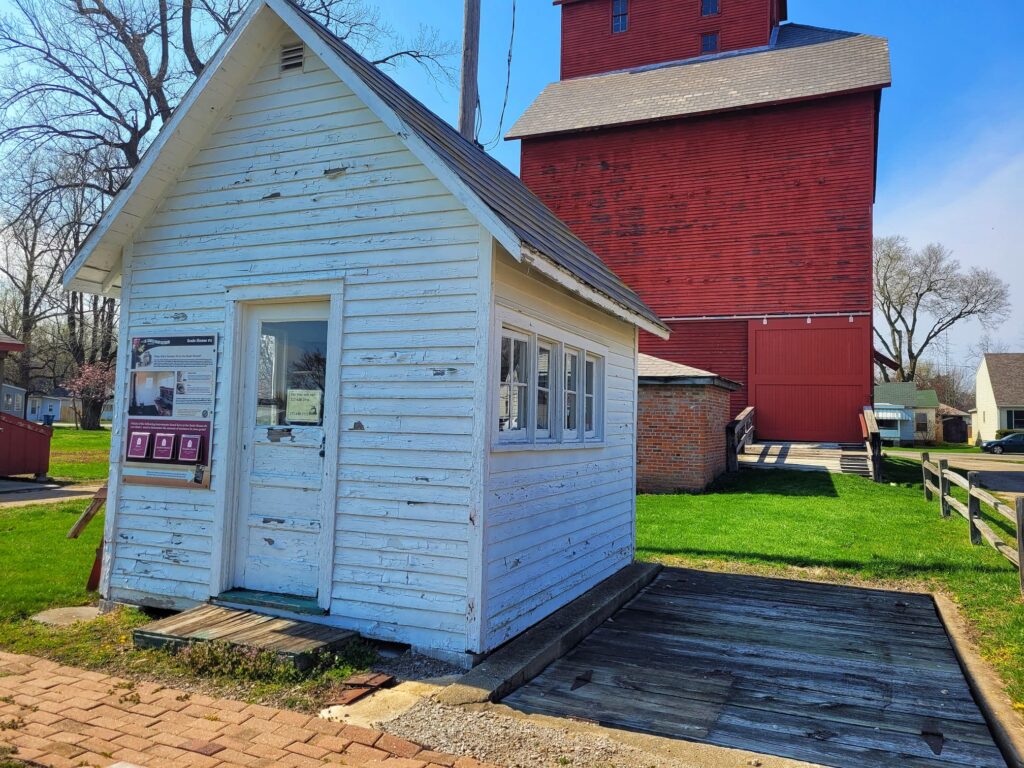
It’s the only fully restored wooden grain elevator in the state, and is mostly original. In the 1940s a truck lift was added, at some point in time part of the brick basement was changed to concrete block, and the original slate roof was replaced with steel- otherwise there have been no additions or changes. It was operational until 1975- so being so original is especially impressive! The elevator is on the National Register of Historic Places and is the only restored wood grain elevator on the register. The museum also includes a 1920s box car, scale house, engine house, one of the last wooden carriage houses in town (relocated from its original location), and the Atlanta Coal Mining Company Historical Mine. When the mine museum is open you can actually look down the mine shaft that was used from 1904-1976. Oh, and it’s also a Harvest Hosts site!
Meet the Muffler Men at the American Giants Museum
Another place we saw from the outside, but wasn’t open when we visited is the American Giants Museum. The museum is one big room, so we were able to peak in the windows and get a good overview of it. The American Giants Museum was started by Joel Baker to share his love and large collection of muffler men and other fiberglass giants. These states were popular advertising in the 1960s and were a hit on Route 66. Joel has the largest collection of muffler men. The museum is pretty new, and focuses on International Fiberglass, one of the largest producers of the giants. The museum is modeled after a vintage Texaco gas station, and has a Happy Half-Wit Muffler Man outside the museum. We were especially excited to see the American Giants Museum now because they’re going to be restoring the Gemini Giant that was recently saved in Wilmington.

Say Hi to Paul Bunyan
Besides the muffler men of the American Giants Museum, Atlanta also has a Paul Bunyan muffler man holding a hot do. He was created by International Fiberglass, and like most of his counterparts never actually held an axe. This Bunyan was intended for a business in Sacramento (International Fiberglass was a California company), but that sale feel through. So H.A. Stephens of Illinois bought him in 3 pieces. He later added the hot dog and displayed the giant at his Cicero hot dog stand, Bunyon’s. Eventually city ordinances changed and made him move the giant from his roof, so Paul spent some years on the ground in front of the stand instead. Eventually, in 2002, the business closed, and the Route 66 Association helped move Paul Bunyan to Atlanta.
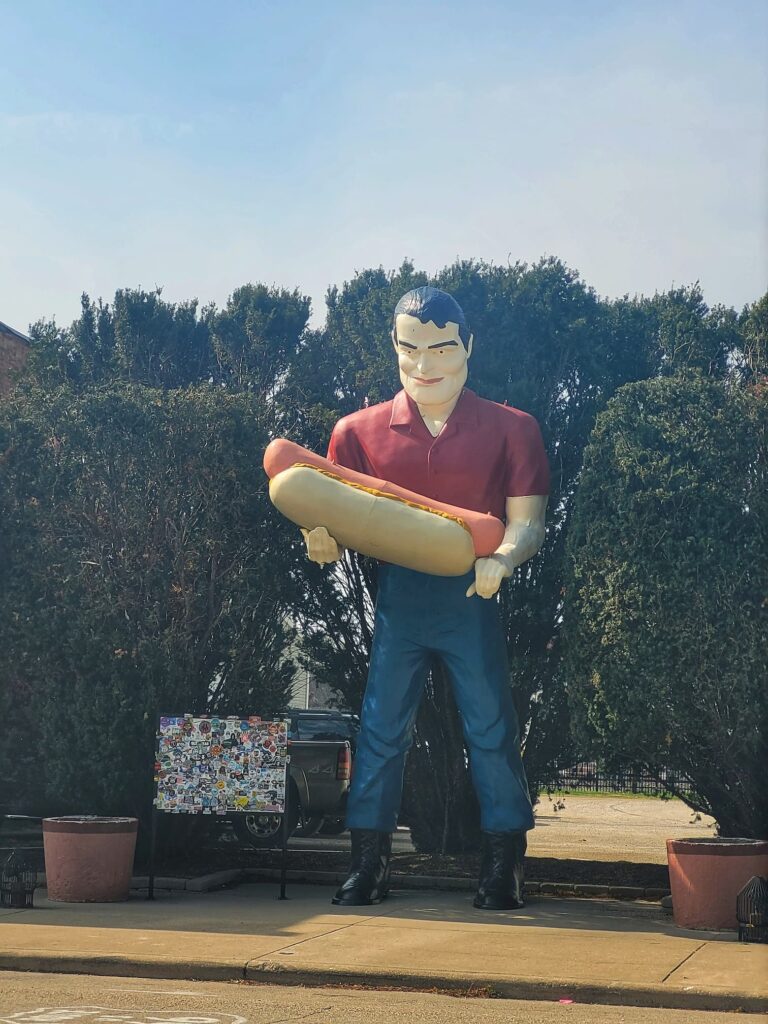
Learn a Little Lincoln History
I’ve talked before about how every Illinois likes to brag about even the most tenuous connection to Abe Lincoln. Atlanta has a Looking for Lincoln sign downtown, so I assumed that meant he had visited at some point. But, nope, there was just an active group of supporters in town. The “Wide Awakes” were active in 1860 in supporting Abe and would march in the streets, hold rallies, and gather to sing political songs.
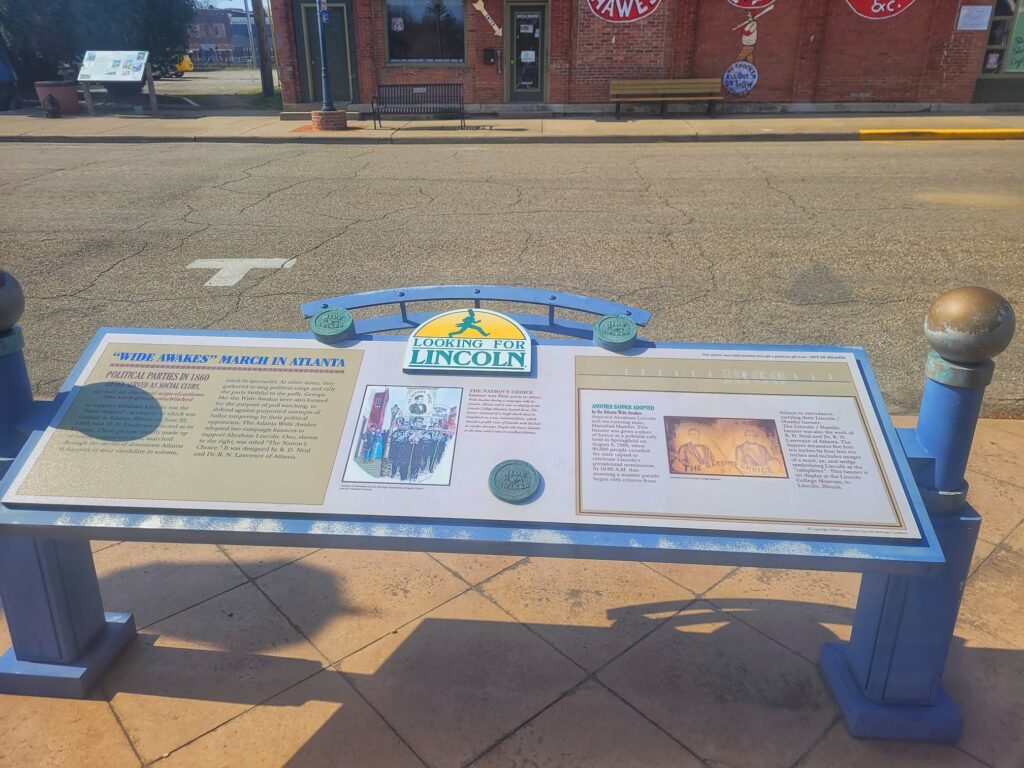
Remember the Fallen
In another pocket park downtown is this eagle carved from a tree stump. It was carved during the Fall Festival on September 11, 2021 to commemorate the 20th anniversary of 9/11.
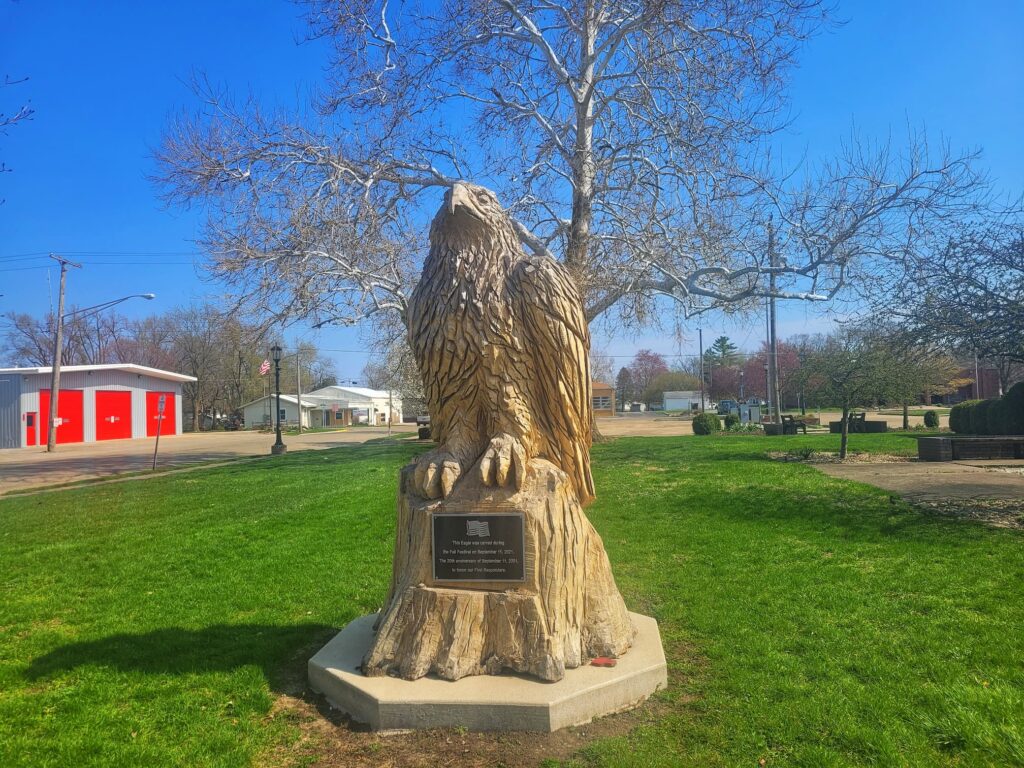
Get Your Kicks on Route 66
The library and grain elevator Harvest Hosts sites weren’t available, but we did check out the other option we had. This outdoor exhibit is a quarter mile of highway that was part of the original Route 66, a billboard, and an informational sign. The actual Harvest Hosts site is a gravel lot at the end of the dead end road. The stretch of road was originally part of Illinois Highway 4, which was the first paved road in the county. A couple years later it became part of Route 66 when that was established in 1926. After WW2, this stretch of road was abandoned in favor of a new Rte. 66 bypass. It’s open to the public to give a feel of what traveling on Route 66 would have been like in the 1920’s and 30’s. It’s only 18 feet wide for both lanes, so not quite what we’re used to today. The billboard alongside the road is a great photo spot.
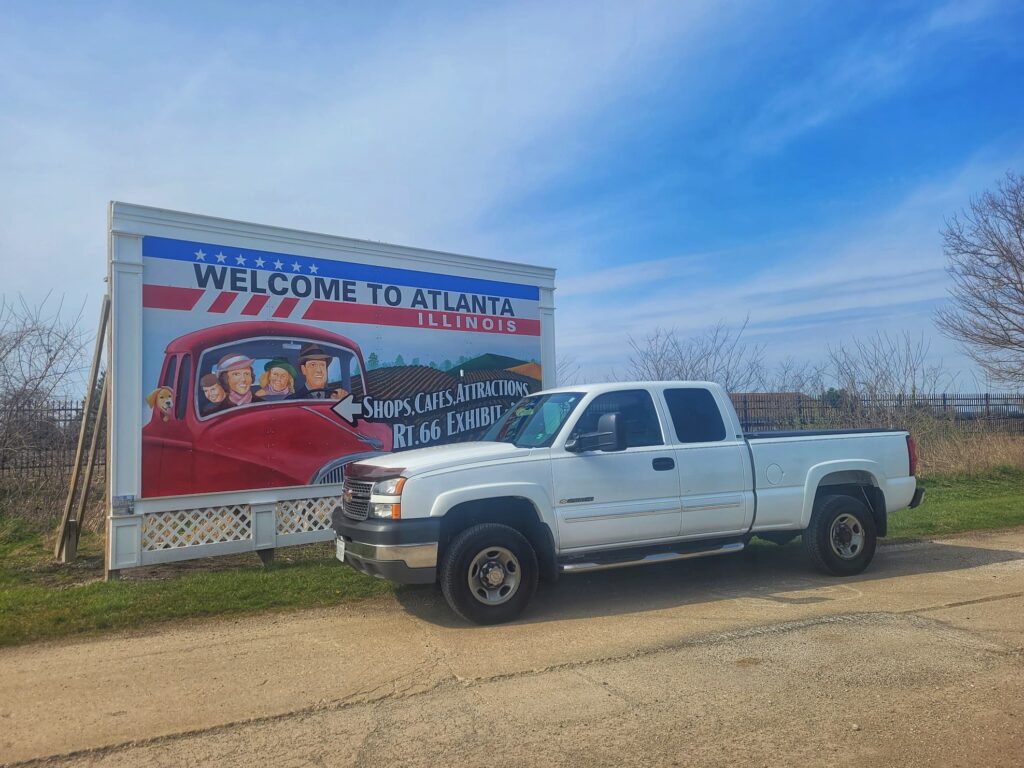
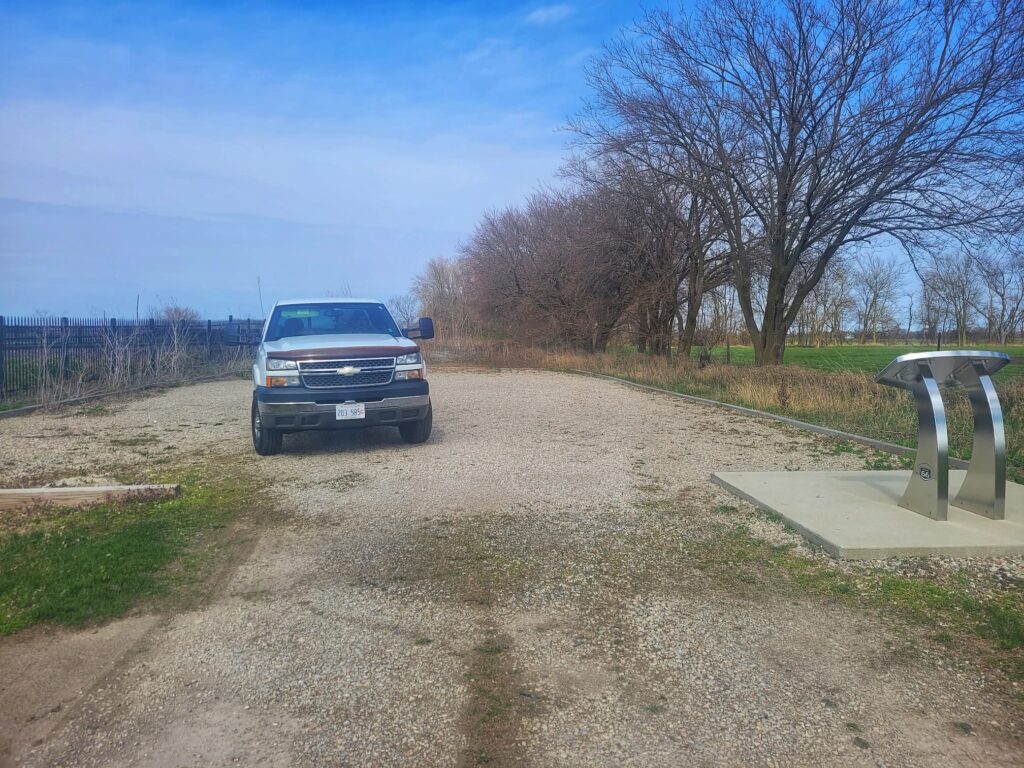
There’s Even More to Do in Atlanta, IL
Besides the closed museums already mentioned, if we make it back to Atlanta in the future we’d love to check out:
- Atlanta Museum to learn even more about the local history
- Missy’s Sweet Shoppe for some treats
- Arch Street Artisans for souvenirs and locally made goods
- Sip Shack for some coffee

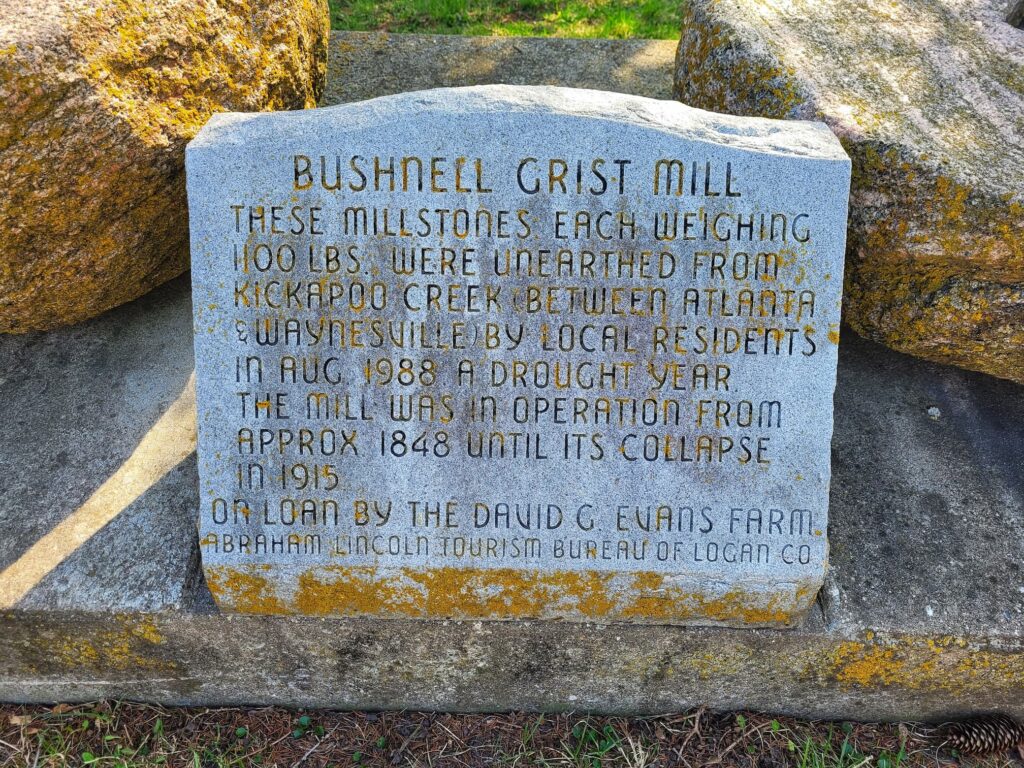
We are Harvest Hosts affiliates, meaning we earn commission on qualifying purchases.




